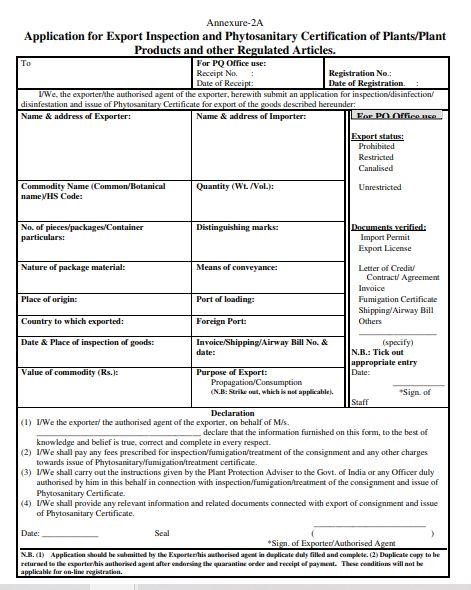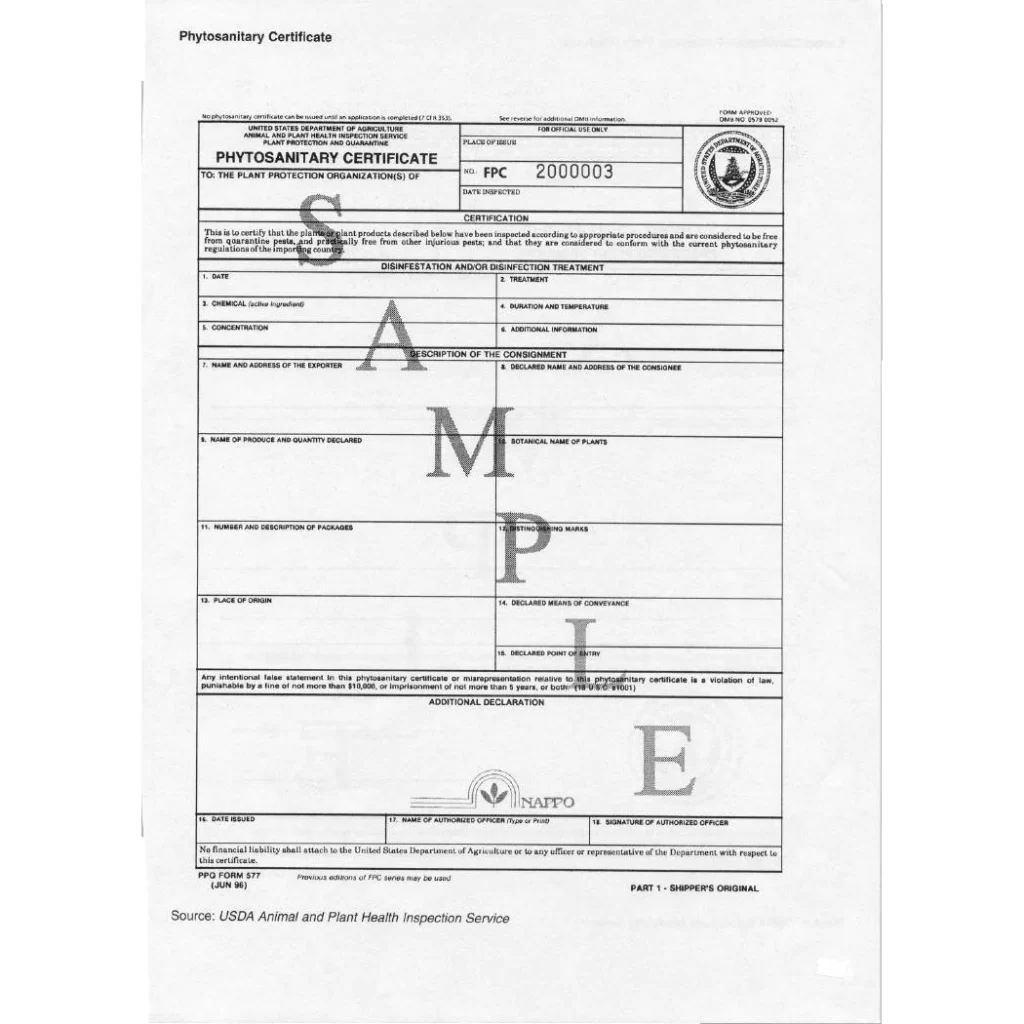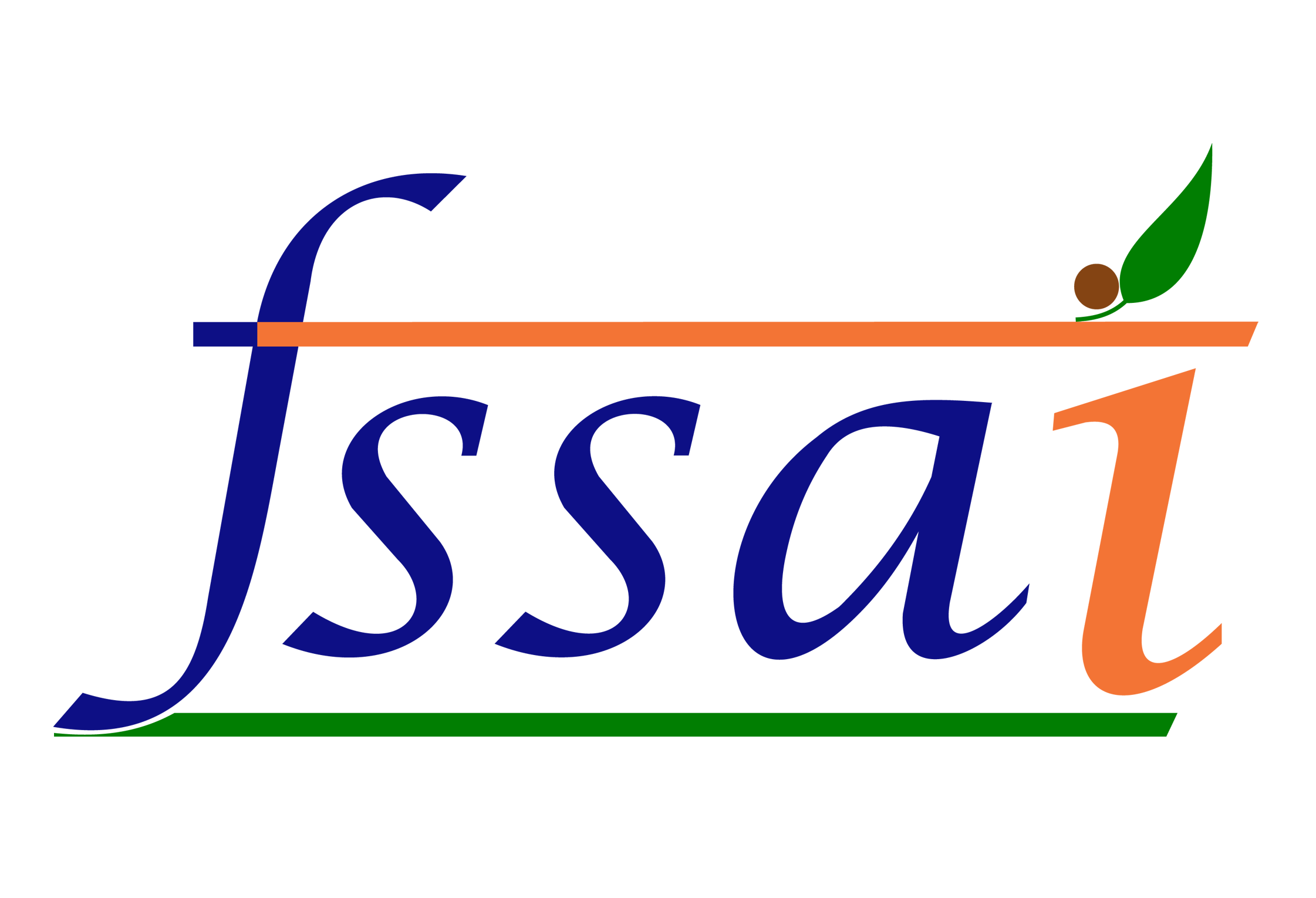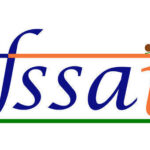What is a phytosanitary certificate?
A phytosanitary certificate is issued to attest those products required to meet phytosanitary import requirements agreed upon by the countries and applied to most plants, plant products, and other regulated articles. The certification allows consumers to be supplied with safe food and protection for plants, flora, and fauna, the ecosystem of the importing country.
Why is a phytosanitary certificate required?
According to a report published by FAO, 40 percent of global crop production is lost to pests. Each year, plant diseases cost the global economy over $220 billion, and invasive insects at least $70 billion.
Some of the instances where invasive species have affected the native country
- The Serpentine leaf miner, Liriomyza trifolii (Burgess) entered India accidentally, during 1990-1991. The native country of this pest is the USA (Florida). Liriomyzia leaf miner may function as a vector of diseases, kill seedlings, cause a reduction in crop yields, and accelerate leaf drops thus exposing the fruits like tomatoes to sunburn and reducing the aesthetic value of ornamental plants.
- Another case was seen in USA, spiny water flea (Bythotrephes longimanus), in the Laurentian Great Lakes resulted in a trophic cascade by reducing densities of a grazer (Daphnia Pulicaria), ultimately leading to a decline in water quality for USD 140 million.
Bodies Managing phytosanitary certification
The International Plant Protection Convention (IPPC) is a 1951 multilateral treaty by the Food and Agriculture Organization that aims to secure coordinated, effective action to prevent and control the introduction and spread of pests of plants and plant products. The Convention extends beyond the protection of cultivated plants to the protection of natural flora and plant products. IPPC created a governing body known as the Commission on Phytosanitary Measures, which adopted International Standards for Phytosanitary Measures (ISPMs) The Food and Agriculture Organization of the United Nation (FAO), via the International Plant Protection Convention (IPPC), has enforced44 adopted ISPMs (ISPM 30 being revoked), 31 Diagnostic Protocols, and 39 Phytosanitary Treatments to protect the world’s plant resource from the spread of pests.
Process for issuing phytosanitary certificate process in India
- The prescribed authority for issuing the Phytosanitary Certificate for Export is the Plant Quarantine Information System, Department of Agriculture, Co-operation and Farmer Welfare, Government of India. This can be done through both offline and online channels.
- Time Limit to Apply: The applicant needs to apply at least 2-3 days before the actual date of the shipment of the consignment. In the case of export of seed consignments such applications need to be filed 8-10 days before the actual date of shipment
- Inspection Fee

- Fumigation Fee: The exporter needs to pay Rs.25 per container for fumigation and treatment of consignment.
- The application for the Phytosanitary Certificate should be accompanied by the following documents:
- Permit issued by the importing countries
- The wildlife clearance certificate is needed if the export commodity is covered under the Convention on International Trade in Endangered Species (CITES) of Wild Flora and Fauna
- Copy of invoice
- Packing list
- Shipping or airway bill
- Letter of credit
- Trade agreement
- Purchase order
- Export license
- Fumigation certificate
- Export inspection fee and Fumigation charges
- The exporter is required to present the consignment and arrange for an inspection at his premises or present the containers at any other approved place on the scheduled date and time of inspection as per the quarantine order issued.
- Laboratory Testing: The Plant Quarantine officer deputed for inspection will draw the sample for detailed laboratory testing.
- Fumigation and Treatment of consignment: If they live insect infestation is noticed, the exporter must arrange for fumigation of the consignment at an approved place by an approved pest control operator under the supervision of the PQ officer.
- Issuance of Phytosanitary Certificate: Phytosanitary Certificates (PSCs) will be issued to the exporter if consignment on inspection is found to be free from pests.

- In the case of re-exported consignments, the PSCs are issued in the re-export format prescribed under IPPC.
Documents needed for consignment
The specific components of the phytosanitary certificate are:
- Unique serial number that facilitates traceback of the product.
- Plant Protection Organization name and name of the country
Section I. Description of Consignment
- Name and address of the exporter
- Declared name and address of the consignee
- Number and description of packages
- Distinguishing marks
- Place of origin
- Declared means of transport
- Declared point of entry
- Name of produce and quantity declared
- Botanical name of plants
- Certifying statement
Section II. Additional Declaration: Any information mentioned in the consignment other than specified in section I should be precise and according to bilateral agreements.
Section III. Disinfestation and/or Disinfection Treatment: Exporting counties should meet regulatory needs for treatments in the importing country.
Section IV. Stamp of organization: The official seal, stamp, or mark identifying NPPO.
Section V. Name of an authorized officer, date, and signature: The name of the issuing official is typed or hand-written in capital letters. The date is also to be typed or hand-written in legible capital letters (where applicable). Only abbreviations may be used to identify months, so that the month, day, and year are not confused.
Section VI Financial liability statement: It is an optional statement and can be mentioned in the phytosanitary certificate.

Conclusion
Bodies like IPPC and PPQS have imposed strict regulations on all countries with steps for introducing phytosanitary certificates for the International Trade of Plants and plant products. This is a crucial measure to ensure that indigenous plants can thrive in the importing countries and that the agriculture industry does not collapse, further leading to global economic losses.









